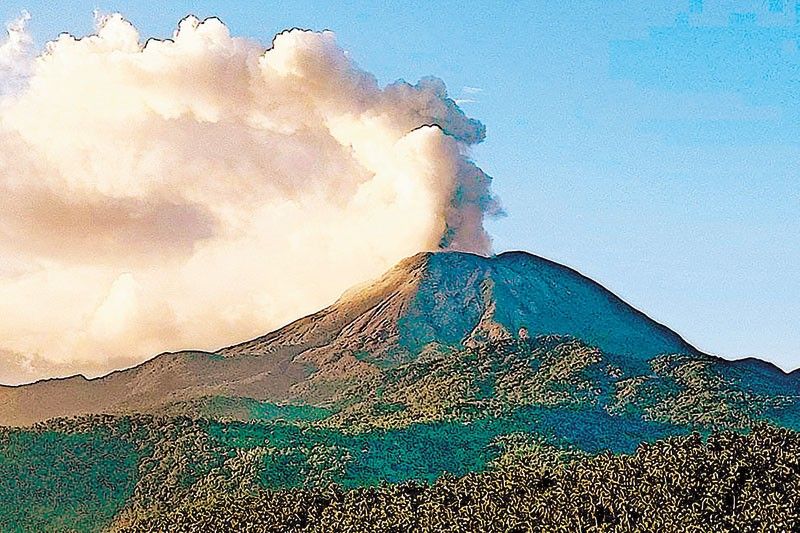Bulusan steaming continues; 69 quakes recorded

MANILA, Philippines — Following its June 5 and 12 phreatic eruptions, Mount Bulusan continues to release steam, indicating persistent hydrothermal activity in the volcano.
The Philippine Institute of Volcanology and Seismology (Phivolcs) said Bulusan’s emissions drifting northwest were about 750 meters high.
From Monday to Tuesday, Bulusan had a total of 69 volcanic earthquakes, including 56 volcanic tremors lasting as long as 19 minutes.
In an update issued yesterday, Phivolcs said the sulfur dioxide flux is at 4,627 tons per day and the volcano edifice remains inflated.
Bulusan is still under Alert Level 1 or low-level unrest, which means entry into its four-kilometer permanent danger zone (PDZ) is banned while entry without vigilance into the two-kilometer extended danger zone (EDZ) is prohibited.
Flying any aircraft close to the volcano is also disallowed since sudden steam-driven or phreatic eruptions are possible.
Phivolcs Director Renato Solidum Jr. earlier cautioned that more phreatic eruptions may occur within the next days or weeks unless Bulusan calms down.
Phivolcs explained that the fluctuating abnormal signs mean that Bulusan remains restive and in the state of massive degassing and hydrothermal unrest.
The agency also warned of increased possibilities of sudden and hazardous phreatic eruptions that can occur without warning.
Phivolcs said it is continuously monitoring the behavior of Mount Bulusan with the National Disaster Risk Reduction Management Council (NDRRMC), assuring the contingency measures are in place.
Evacuees return
Meanwhile, 148 families or 489 persons displaced by Bulusan’s June 5 and June 12 phreatic eruptions have left evacuation centers and went back to their homes in Barangay Puting Sapa in Juban, Sorsogon.
Juban Municipal Disaster Risk Reduction Management Council (MDRRMO) spokesman Arian Aguallo said the evacuees have left the evacuation centers in Barangays Tughan and North Poblacion after four days of refuge from the ash-laden phreatic eruptions.
Aguallo said they decided to send them home after abnormal signs from Bulusan gradually subsided and clearing operations in their village were finished.
“The place is already cleared of ash and other debris so it is safe to go back there already. We know that Bulusan remains abnormal that’s why we advise them to be very vigilant so that they could immediately evacuate should the volcano’s condition escalate again,” Aguallo told The STAR.
Aguallo admitted that some of the evacuees still appeared hesitant to go home, as they feared Bulusan’s abnormal condition might suddenly worsen again.
But he said clearing operations in Puting Sapa, one of the worst-hit villages in Juban town, were already completed.
Aid distribution
Over P1.6 million worth of assistance has been distributed to residents affected by the eruption of Mt. Bulusan in Sorsogon, according to the Department of Social Welfare and Development (DSWD).
The DSWD said that it has allocated over P504,000, P22,000 from LGUs, while the rest were from non-government organizations and other partners.
The DSWD said the assistance was given in the form of family food packs and hygiene kits, among others. A total of 10,707 families or 44,669 individuals from 30 baranggays in Irosin and Juban were affected by the volcanic eruption.
The department said it is closely coordinating with LGUs for the continued relief assistance to affected residents.
Some 25,000 food packs are available at the DSWD, which may be used to augment the resources of the affected localities.
The DSWD also has over P600 million in standby funds and more than 557,000 food packs prepositioned in strategic locations for disaster operations.
“The DSWD is committed to collaborate with its partners so the affected population could be effectively and efficiently assisted,” it added. – Cet Dematera, Romina Cabrera
- Latest
- Trending






























